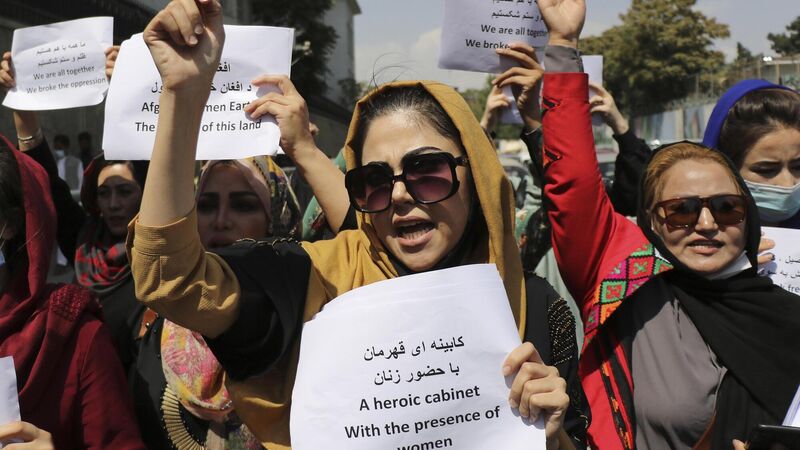Joyce Fegan: We can't let Afghan women's rights go out of fashion

Even as the Taliban were taking control of Afghanistan, these brave women were gathering to demand their rights under the new regime in Kabul, on September 3. Picture: Wali Sabawoon/AP
For anyone who ever doubted the intentions of feminism, or who missed the point that women's rights were in fact human rights, we need look no further than Afghanistan right now.
There is not a voice outside of the Taliban suggesting that the current erosion of women's rights there is a good thing.















